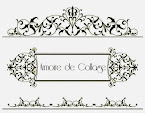
Dolls date back to the origin of the human species. They have been found in caves, pyramids, and temples, made from materials ranging from bone, wood, clay, and stone. Manufactured dolls have been made of paper, cloth, porcelain, rubber, and plastic. Originally intended as toys traditionally for girls, action figures produced by Hasbro in 1964, i.e. “G.I. Joe”, introduced this type of play toy for boys. Dolls are now collected by adults for their value or nostalgia, with the Barbie collectors being some of the most passionate.
The Barbie fashion figure was somewhat controversial at first, because of her anatomically enhanced form, but truthfully she was not the first anatomically correct doll. The health profession, medical schools, and department stores had been using lifelike mannequins long before Barbie debuted at the American International Toy Fair in New York, on March 9, 1959, by Mattel, Inc.
At the high end of collectible dolls are 19th-century bisque dolls like those made by French manufacturers Bru and Jumeau, which may be worth over $20,000. Simon and Halbig German bisque ‘K star R’ (Kammer & Reinhardt) dolls start at around $500, and go upwards depending on condition. Pictured in center of photo collage is a K star R doll, circa early 1900’s, restored and dressed to resemble the owner’s mother from a portrait from the early 1900’s (see portrait hanging above doll.)
Unfortunately the quantity of antique dolls in very good to mint condition is not equal to the growing number of antique doll collectors. The number of doll restorers who specialize in the restoration or repair of dolls is quite limited. Although some doll brands offer doll repair service for their own dolls, it’s difficult to find someone talented enough to work on dolls made from all materials.



No comments:
Post a Comment